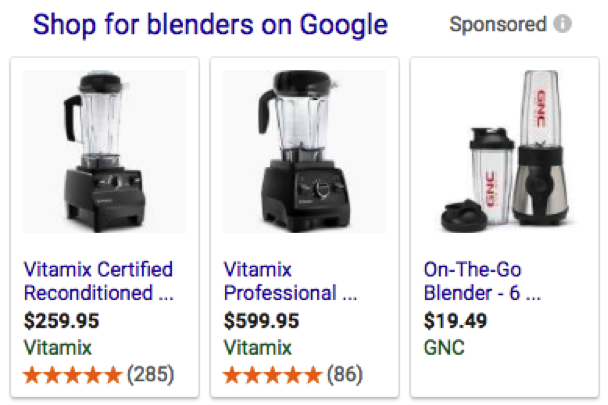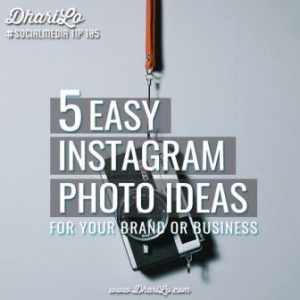— October 11, 2017
If you’ve stayed up to date with Google Shopping optimization techniques, you may already be doing a stellar job of creating effective and engaging campaigns. But, are you covering all bases to ensure the highest possible yields? Here are three tips and strategies to fine-tune your efforts.
1. Ensure Your Products Include Ratings
One of the most effective ways to make your product listings stand out is to enrich them with product star ratings. This will add to your brand’s credibility and help attract qualified visitors.
In order for your ads to be eligible to show ratings, you must have a minimum of 50 reviews across all of your products and an individual product must have at least three reviews. You can source these ratings from a number of different review aggregator sites. If your products meet these requirements, you must then send an interest form to Google in order to enable ratings.
The fact is, as survey research indicates, customer reviews factor heavily into consumer buying decisions in this increasingly competitive online shopping landscape. Make sure your products are equipped to keep up.
2. Include Unique Product Identifiers
In 2016, Google instituted the requirement that all Merchant Center products that have a manufacturer-assigned GTIN must have them included in their data feed. According to Google, this decision was made because including GTINs helps them to better identify the product, and therefore to better facilitate the delivery of ads for those products in more relevant ways to users.
While this requirement was only put in place for products with GTINs, the logic still applies for including other types of unique product identifiers that aren’t included under that umbrella term such as MPN (Manufacturer Part Number) and Brand. So, if the products you’re selling use any such identifiers, from a performance standpoint it makes sense to include them in your product feed. In fact, as part of their rationale, Google notes that merchants who added GTINs to their feeds saw conversion rates increase up to 20%.
3. Silo Shopping Campaigns Based on Intent
In a previous post about optimizing shopping campaigns, we emphasized the importance of using negative keywords to filter out unqualified traffic. But you can also use negatives, combined with campaign priority settings, to create intent-targeted campaigns with what is sometimes referred to as a negative keyword “waterfall.”
Here’s the idea:
With our standard search campaigns, we can actively bid on keywords to aid in our Shopping campaign targeting and adjust bids according to each keyword’s level of search intent. Not so with actual Shopping campaigns—but there’s a great workaround. We can instead rely on keyword negatives, and take advantage of the Shopping campaign priority setting to funnel search queries to trigger ads from the campaigns of our choosing. In this way, we can effectively set optimal bids on our products based on search intent.
We start by setting up multiple, identical campaigns in which the only differences will end up being their negative keyword inventory, campaign priority settings, and bids. Since there are three campaign priority settings (High, Medium, and Low) we can break out up to three campaigns, each of which will correspond to different levels of intent.
The campaign priority setting works such that whenever you have products across campaigns that can be triggered by the same search query, the product whose campaign has the higher priority will be shown, regardless of their bids. This is where strategically added negatives come in, as this would otherwise result in only the High Priority campaign delivering ads. These negatives will correspond to different levels of intent and, since we’ve designated three levels of campaign priority, we’ll also need to designate three levels of keyword intent to our negatives. Just like we do when we structure our traditional search campaigns, let’s think of these levels of intent in degrees of specificity—we’ll call them generic (e.g. “shoes”), product (“running shoes”), and brand (“Nike shoes”).
The campaigns should end up looking and functioning like this:
- The high-priority campaign will be designated, inversely, as the Low Intent campaign. This will contain negative keywords that include both the product and brand levels of specificity. This campaign will therefore only be triggered on generic search queries. Accordingly, we want to set bids low on these products since we expect these search queries to have the lowest conversion rate.
- The medium-priority campaign will be designated as the Brand Intent campaign. This one will contain negative keywords that include only the product level of specificity. This campaign will therefore be triggered on branded search queries with product–level queries excluded and because the generic keywords will be captured by Low Intent campaign due to priority. The bid level on these will depend on whether the brand is your own (in which case, keep bids low as you’ll already have an advantage) or not (in which case, bids should be set higher as there will likely be more competition).
- The low-priority campaign will be designated, inversely, as the High Intent campaign. This one will contain no “waterfall” negatives (only negatives for filtering out unqualified traffic). This campaign will therefore be triggered on product–level queries only since the and brand and generic queries will be captured by the higher-priority campaigns. The bid level on these should be set higher since they describe a specific product.
More and more advertisers making use of PLAs in their digital marketing programs with increasingly sophisticated technologies like feed management tools and bidding automation. It’s more important than ever to make sure that yours are able to stand up to the competition.
Digital & Social Articles on Business 2 Community
(91)
Report Post









